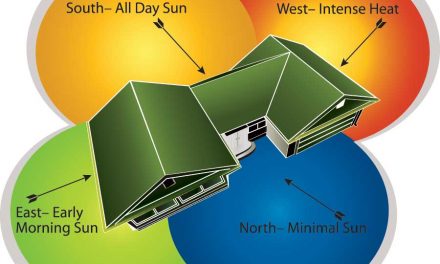By Brian Corder
Our legacy will not only be in what we teach, but also the infrastructure we leave behind.
You never know when the smallest decisions will have profound consequences. The genesis of that market started with a road trip by an ICF manufacturer and the lead architect working on a school design in Kentucky. The Warren County School District has been a rapidly growing district since the 1980s and embracing energy-efficiency in construction projects. The main driver behind this focus is that school utilities and staff funding come from the same general fund, so lower operating costs means more dollars in the classroom.
Beginning with district-wide energy monitoring, each new construction project improved energy-efficiency through design and materials. As district growth increased, more efficiency was needed. In the early 2000s a seismic shift occurred after a road trip to a small private school in Arkansas. The Arkansas school had just finished phase one of their development and the principal showed the visitors their utility bills which were an order of magnitude lower than schools of comparable size. The difference: ICF construction.
Returning home, the design team began mapping out a transition to ICFs in their projects and on a much larger scale. The next project was the nearly 80,000-sq.ft. Alvaton Elementary School in Bowling Green, Kentucky. This school coupled geothermal with ICFs in a school for the first time. Energy usage for a typical school in climate zone 4, where the Warren County School district is located, is around 73 EUI. During its first year of operation this was reduced to 35 EUI at Alvaton. There were several challenges with adopting ICFs for a project of this size. Most of them were related to creating the construction details and other resources necessary to communicate the design and engineering for construction.
We take for granted these resources now, CAD details, BIM models and more, but it became mainstream with that project.
“The district was growing about a school population a year. After Alvaton, the rapid design and construction schedule allowed us to quickly iterate both building materials and design.” states Kenny Stanfield, principal at Sherman Carter Barnhart.
One of the greatest additions to the ICF and geothermal technologies was a solar array. “The challenge was to bring the school in for the same per square foot cost as a conventional school. This meant finding $2.8M in savings to offset the solar array. Comparably, the solar on the latest school we opened was about $400,000. The cost per watt has dropped from around $7.90 per watt to around $3.00. While still significant, this is equivalent to the type of roof system we use or the floor finish on the project.” says Stanfield. “Dramatic energy reduction coupled with onsite renewable energy and a net zero design means that every time you bring a school online that has the capacity to produce its equivalent in green energy, we’re kind of like a micro green energy plant.”
Applying the lessons learned in the Alvaton project, the Richardsville project was the culmination of years of work; an 80,000-sq.-ft. net zero school that generates more energy than it consumes. The resounding success is reflected in the EUI of 25 and the school has collected an average of more than $30,000 each year from the utility company adding to the bottom line. This project was built for the same cost as convention construction and brings with it the added benefit of disaster resilience and enhanced life safety. Through design and other construction material savings, in most cases, it’s cheaper to build these schools with ICFs than with conventional masonry.
This project and its design methodologies laid the groundwork for the more than 156 net zero education facilities that are underway across 36 states with more to follow.
As the cost of other energy-efficiency technologies continues to decrease, ICF performance is the tipping point that makes them cost effective for the long term.
Our legacy for future generations will not only be in what we teach, but the institutions and infrastructure we leave behind. What we build today will hopefully live on for decades or more as long as the structures serve a purpose. What we build and how well we build it will pay dividends well into the future.
Brian Corder is marketing chair for the Insulated Concrete Form Manufacturers Association and president of BuildBlock Building Systems.












